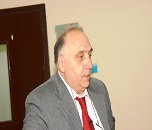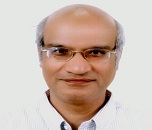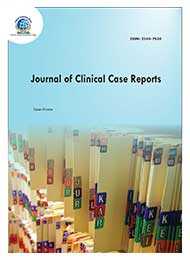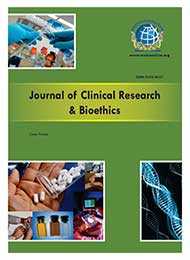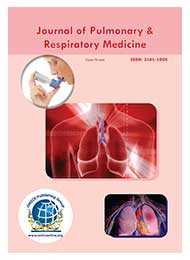Theme: Advancing Clinical Knowledge and Treatment Strategies
Euro Case Reports 2016
On behalf of the Euro Case Reports 2016 committee, we are pleased to invite you to join the upcoming Third International Conference on Medical Case Reports during June 30 - July 02, 2016 at Valencia, Spain.
Accreditation:
This activity has been planned and implemented in accordance with the accreditation requirements and policies of the Accreditation Council for Continuing Medical Education (ACCME) through the joint providership of PeerPoint Medical Education Institute and ConferenceSeries Ltd. PeerPoint Medical Education Institute is accredited by the ACCME to provide continuing medical education for physicians.
PeerPoint Medical Education Institute is accredited by the ACCME to provide continuing medical education for physicians.
Designation:
PeerPoint Medical Education Institute designates the live format for this educational activity for AMA PRA Category 1 Credits™. Physicians should only claim credit commensurate with the extent of their participation in the activity.
Euro Case Reports 2016
Euro Case Reports 2016 will pursuit a platform for global promotion and recognition of case studies as reference for safe treatment therapy. It includes the discussions and speeches on different case reports filed on diseases and disorders by medical professionals from all parts of the world. It also involves the advances in treatment therapies with minimization of adverse reactions in promotion of a healthier life.
Theme: Advancing Clinical Knowledge and Treatment Strategies
Sessions of Euro Case Reports 2016
Track 1: Psychology Case Reports:
Psychology involves the study of mind and behavior. Psychologists explore concepts such as perception, cognition, emotion, intelligence, phenomenology, motivation, attention, brain functioning, personality, behavior, and interpersonal relationships also including psychological resilience, family resilience, and other areas. Psychological knowledge is often greatly used to the assessment and treatment of mental health problems, ultimately aims to benefit society.
- Schizophrenia- It is a type of mental disorder which is characterized by the abnormal social behavior and the person fails to recognize what is real. Symptoms include false beliefs, hallucinations, and confused thinking’s. The patient is diagnosed by the observed behavior and experiences.
- Depression- It is a state of low mood an the patient with depression generally feels sad, hopeless, worthless etc.
- Alzheimer’s disease- It is a disease that destroys the memory and other mental functions gradually. The disease has no cure but they can be manageable with the help of medicines.
- Anxiety- This is a disorder of serious mental illness. Patients with anxiety generally feel anxious, nervousness at different conditions; it disturbs the person’s ability to lead a normal human life.
- Phobias- It is a type of anxiety disorder in which the patient persistently feels fear of an object or a situation.
- Other psychology diseases and disorders.
Related Conferences:
International conference on Adolescent Medicine & Child Psychology, USA September 28-30, 2015; 3rd Euro Psychiatrists Meeting September 07-09, 2016 Amsterdam; 4th International Conference on Psychiatrist and Geriatric Psychiatry December 08-10, 2016 Seattle, USA; 2nd Emergency Mental Health & Human Resilience Meeting July 14-15, 2016 Cologne, Germany; 2nd International Conference on Psychiatry and Psychiatric Disorders May 02-04, 2016 Chicago, USA; International Meeting of the Psychonomic Society in Spain; WAIMH Conference (World Association for Infant Mental Health), Czech Republic; European Conference of Positive Psychology ECPP8, France; Biennial Meeting of The International Society For The Study Of Behavioral Development, Lithuania; Conference of the International Test Commission (ITC), Canada; 2016 Biennial Conference of the International Association for Relationship Research, Canada; International Congress of Psychology in Japan; International Conference on Traffic and Transport Psychology, Australia;
Track 2: Case Reports on Neurology:
This branch involves the diagnosis and treatment of diseases and disorders of central and peripheral nervous system. The disorders of nervous system are categorized by the location and the dysfunction. The major neurological disorders are:
- Epilepsy- It a group of related disorder which are characterized by a liability of recurrent seizures. It is a problem associated with the brain’s electrical system. The person suffering from epilepsy may have partial or generalized seizures.
- Dizziness- Dizziness is a common thing which is not a disease, it is the symptom of other disorders. Generally it is the feeling of lightheaded and unbalanced. Sometimes dizziness may cause fainting.
- Multiple Sclerosis- It is a condition in which the communication between the brain and body is disrupted and the nerves get deteriorated themselves, which is irreversible.
- Back pain- It is the pain that usually originates from muscles, nerves, joints, bones. Back pains are usually self-limiting and non-progressive.
- Brain and spinal cord injury- These are generally the sudden physical damage to the brain and spinal cord. Spinal cord injury may also lead to the loss of mobility.
- Dementia- The daily functioning of the human being interfered with the thinking and social symptoms.
- Other neurological diseases and disorders.
Related Conferences:
5th International Conference and Exhibition on Addiction Research & Therapy October 06-08, 2016 Florida, USA; 2nd International Conference on Central Nervous System Disorders and Therapeutics December 01-02, 2016 Dubai, UAE; European Neurology Congress September 10-12, 2016, The Netherlands; 2nd International Conference on Neurological Disorders and Stroke April 28-30, 2016 Dubai, UAE; International Conference on Neuro-Oncology July 21-23, 2016 Brisbane, Australia; 2016 Alzheimer's Disease Congress, United Kingdom; DGNC — Annual Meeting of the German Society of Neurosurgery, Germany; FENS FORUM 2016, Denmark; France-Israel conference in Neuroscience: The power of mathematics in contemporary neuroscience, France; Stress And Behavior: Yokohama-2016 —Russia; 2016 Sleep Summit, United Kingdom;
Track 3: Ophthalmology Case Reports:
This branch of medicine deals with the anatomy, physiology and diseases of the eye. The ophthalmology is a vast topic that includes the major subspecialties which is either concern with certain diseases or diseases of certain parts of the eye. Some of them are the following:
- Cataracts- It is the clouding of normally clear lens of human eye. People with cataract feel difficulty in reading, driving especially in night.
- Glaucoma- It is a very common eye disorder that results in optic nerve damage, which is also associated with the increased fluid pressure in eyes.
- Ocular Oncology- It is the case that involves the tumors and cancers of eye which are benign (like choroidal nevus, choroidal hemangiomas) and malignant (iris, ciliary body, choroid, conjunctiva, eyelid, orbit and metastatic melanoma to the eye), retinoblastoma, ocular metastasis.
- Oculoplastics- It is the reconstruction of eye and the associated structures. It involves various surgical procedures dealing with different parts of eye.
- Other diseases and disorders of eye.
Related Conferences:
10th International Conference on Clinical & Experimental Ophthalmology Nov 28-30, 2016 Dubai, UAE; International Conference on Cataract and Refractive Surgery August 04-05, 2016 Manchester, UK; Optometry and Vision Science Congress October 27-29, 2016 Rome, Italy; 2nd International Conference on Eye and Vision September 26-28, 2016 Miami, USA; World Ophthalmology Conference September 15-17, 2016 Berlin, Germany; EVRS Congress, Italy; DOG 2015, Berlin; JOI (Day Ophthalmology Interactive), France; SEEOS Congress (South East European Ophthalmological Society) & 1st COFD Congress (Montenegrin Society of Ophthalmology), Montenegro; ECLSO congress (European Contact Lens Society of Ophthalmologists), Turkey ; Ophthalmic Imaging: from Theory to Current Practice’’, Europe; BSOS Congress , Moldova; SOI National Congress, Italy; International course on ophthalmic trauma surgery meetings, Europe; SOI International Congress, Italy; Meeting of the Club Jules Gonin, France;
Track 4: Dentistry Case Reports:
This is the branch of medicine that deals with the oral cavity diseases and disorders. As mouth is the gateway of food to the body it is invaded by many bacteria, viruses, fungi, parasites. Thus many infectious diseases may affect the oral cavity and some of them are:
- Dental Caries- This involves the breakdown of teeth due to different activities of bacteria. The cavities can turn to different colors and the symptoms include difficulty with eating, pain and inflammation.
- Periodontal Diseases- These affect the alveolar bone, periodontal ligament, cementum and gingiva. The treatment involves the removal of biofilm deposits, scaling and root planning.
- Gingivitis- It is a very common gum disease that involves the swelling, redness and inflammation of gums but if untreated it may lead to tooth loss.
- Periodontitis- It is characterized by the inflammation of supporting tissues of tooth and the loss of gum attachment due to periodontal tissues. The frequency and severity of disease increases with age.
- Oral Candidiasis- The mucus membranes of mouth are affected by mycosis candida species. The lesions appear at site of infection there are no signs and symptoms but in some cases inflammation may occur
- Other dental diseases and disorders.
Related Conferences:
5th American Dental Congress October 05-07, 2015 Philadelphia, USA; 6th Indo congress on Dental & Oral health November 23-25, 2015 Bengaluru, India; International Congress of the Egyptian Orthodontic Society, Egypt; Oral Dermatology Conference, Spain; ESMD 2016 — 5th Congress of the European Society of Microscope Dentistry, Lithuania; Eastern Caribbean Cruise April 2016 — Comprehensive Dentistry and the Dental Team, United States; 3rd Edition Asia Pacific CAD/CAM & Digital Dentistry Conference, Singapore 2015, Singapore; Predictable Treatment Planning Eastern Caribbean Cruise, United States; Training — Angled & Wide Implants Hands on Course | Dr. Costa & Team, United Arab Emirates;
Track 5: Cardiology Case Reports:
Cardiology is a branch of medicine dealing with disorders of the heart. Heart is an important muscular organ in humans and other animals, pumps blood through the blood vessels of the circulatory system. The drugs that are used to treat other disorders in body show a great impact on heart causing various side effects. Hence case reports on cardiac disorders and diseases have a great value and help in advancing and development of treatment strategies.
- Congestive heart failure-This condition occurs when the heart fails to pump the blood effectively, due to this fluid gets accumulate in the tissues of body. Symptoms mostly include congested lungs, breathing difficulties, water retention, dizziness and weakness.
- Cardiac arrhythmia- It is a condition occurs when the heart beat is irregular. If the heart beat is too fast that is 100 per minute or more then it is known as tachycardia and if the heart beat is 60 per minute or less it known as bradycardia. These condition symptoms include breathing problems, palpitations, chest pain.
- Myocardial and Pericardial disease- This condition occurs when the blood flow stops to part of the heart causing damage to the heart muscle. Pericardial disease is a diseased condition which results in compression of heart, there by blood flow to heart gets restricted.
- Vascular heart disease- This deals with blood vessels and valves of heart. This symptoms include shortness of breath, dizziness, weakness etc.
- Angina pectoris- It is a condition occurs when there is inadequate supply of oxygen to the heart muscle and thereby chest pain occurs. The pain that occurs usually in severe and crushing often also spreads to shoulders, arms and neck.
- Hypertension- It is a chronic medical condition in which the blood pressure in the arteries is elevated. It is expressed by two measurements (100-140 mmHg systolic and 60-90 mmHg diastolic).
- Atherosclerosis- This condition occurs because of the thickening of the artery walls as a result of accumulation of WBC.
- Other cardiovascular diseases and disorders
Related Conferences:
8th Global Cardiologists Annual Meeting July 18-20, 2016 Berlin, Germany ; World Cardiology-2016 October 10-12, 2016 Manchester, UK; 6th International Conference on Cardiology November 30-December 02, 2015 San Antonio, USA; International conference on Cardio Vascular Medicine October 10-11, 2016 Manchester, USA; European Cardiology Congress October 24-26, 2016 Valencia, Spain Abu Dhabi Conference on Heart Failure An Update on Diagnosis and Therapy, United Arab Emirates; Annual Autumn Meeting — British Society for Heart Failure, United Kingdom; Advances in the Pathogenesis and Management of Cardiovascular Disease, United Kingdom; European Middle East Forum on Cardiovascular Risks, Hungary; CSI Africa 2015, Ethiopia; Cardiovascular and Respiratory Physiology Conference, Belgium;
Track 6: Pulmonology case reports:
Pulmonology is a medical specialty that deals with diseases involving the respiratory tract. Physicians of this category are specially trained in diseases and conditions of the chest, particularly pneumonia, asthma, tuberculosis, emphysema, and complicated chest infections. Medication involves inhalation (bronchodilators and steroids) or in oral form (antibiotics, leukotriene antagonists). A common example being the usage of inhalers in the treatment of inflammatory lung conditions such as asthma or chronic obstructive pulmonary disease. Oxygen therapy is often necessary in severe respiratory disease (emphysema and pulmonary fibrosis). When this is insufficient, the patient might require mechanical ventilation.
- Pulmonary fibrosis- Also known as scarring of lungs. Scars are formed in the lungs tissue because of the accumulation of excess fibrous tissue and this further leads to thickening of the lungs walls and thereby there is reduction in oxygen supply in the blood.
- Rheumatoid lung disease- This involves group of lung problems related to rheumatoid arthritis such as blockage of airways, scars in lungs, fluid in the chest etc.
- Asthma- A chronic medical condition in which the persons airway becomes inflamed, narrow, swell and produce extra mucus. It includes the symptoms of trigger coughing, wheezing, shortness of breath.
- Bronchitis- A condition that occurs when the lining of the bronchial tubes become infected or inflamed.
- Chronic obstructive pulmonary disease (COPD)- This involves the group of lung diseases that block airflow and make it difficult to breathe. It involves the general symptoms such as wheezing, chronic cough.
- Other pulmonology diseases and disorders.
Related Conferences:
4th International Conference on Lung & Respiratory Care August 01-03, 2016 Manchester, UK; 2nd International Conference on Respiratory and Pulmonary Medicine May 09-10, 2016 Chicago, USA; 5th Global Respiratory and Pulmonologist Annual Meeting November 17-18, 2016 Dubai, UAE; 3rd International Conference on COPD July 11-12, 2016, Brisbane, Australia; International Conference: Clinical Update 2016, United Kingdom; Lung Cancer Symposium: A Practical Approach, United States; ASEAN ORL-HNS Congress, Thailand; Singapore-Duke Conference 2015, Singapore; Conference on Pulmonary Medicine: Egyptian experience, Egypt;
Track 7: Gastroenterology Case Reports:
Gastrointestinal diseases refer to diseases involving the gastrointestinal tract, namely the esophagus, stomach, small intestine, large intestine, rectum and the accessory organs of digestion in the liver, gall bladder and pancreas. It is the part of body which helps in supply of nutrients and necessary requirements to the body. It helps in supplying energy and growth development.
- Ascites- Fluid gets build up in the abdominal cavity, within the peritoneal cavity that is located within the abdomen and abdominal organs. The symptoms include the swelling of abdomen and the ankles.
- Chronic Hepatitis C- Blood borne infection often cause by a virus. This largely affects the liver.
- Constipation- Infrequent bowel movements those are difficult to pass. The causes of this condition are lifestyle factor, diet, stress etc.
- Diarrhea- It is an increase in frequency of bowel movements and an increase in the looseness of stool or both. It can be acute or chronic having different treatment for both.
- Esophageal Cancer- This cancer develops in either upper portion or lower portion of esophagus. This affects the lining of the esophagus, the muscular tube that connects the mouth to stomach.
- Gastritis- Swelling and inflammation of the lining of the esophagus occurs. If untreated it may lead severe conditions such as stomach cancer.
- Hemorrhoids- These are the swollen veins and clusters of tissues that develop in the anus and lower rectum.
- IBS (Irritable Bowel Syndrome)- This disturbs the functioning of the colon by interfering with digestion by preventing the bowel from properly advancing the stool. Based on severity of the condition it ranges from mild to severe appearance.
- Ulcerative Colitis- This is a form of IBS characterized by severe diarrhea and abdominal pain. This may sometimes leads life threatening complications.
- Other gastroenterology diseases and disorders.
Related Conferences:
International Conference on Clinical Gastroenterology & Hepatology October 03-05, 2016 Toronto, Canada; 6th Gastroenterology and Gastroenterologists Annual Meeting June 16-18, 2016 Philadelphia, USA; International Conference on Pancreatic Disorders and Treatment May 12-14, 2016 Chicago, USA European Gastroenterology Conference October 24-26, 2016 Valencia, Spain Cleveland Clinic Multidisciplinary Esophageal Cancer Symposium, United States; European Association of the Study of Liver Disease Conference, Spain; The United European Gastroenterology Week, Austria; Endoscopies Workshop EVK Düsseldorf 2015, Germany; Conference on Colorectal Surgery, United Kingdom; endo-update 2015, Germany;
Track 8: Diabetes Case Reports:
Diabetes Mellitus: Diabetes, it is a group of metabolic diseases in which involves high blood sugar levels over a prolonged period. Diabetes is due to either the pancreas is not producing enough insulin or the cells of the body not responding properly to the insulin produced. The three main types of diabetes mellitus:
· Type 1- Insulin dependent
· Type 2- Insulin independent
· Type 3- Gestational Diabetes
Diabetes Insipidus: This condition is characterized by excessive thirst and excretion of large amounts of severely dilute urine with reduction of fluid intake having no effect on the concentration of the urine. There are different types of DI, where each type involves a different set of causes.
The most common type in humans is the neurological form, called Central DI (CDI), which involves a deficiency of arginine vasopressin (AVP), also known as antidiuretic hormone (ADH).
The second common type of DI is nephrogenic diabetes insipidus (NDI), which is due to kidney or nephron dysfunction caused by an insensitivity of the kidneys or nephrons to ADH. DI can also be gestational, or caused by alcohol or some types of drug abuse. DI should not be confused with nocturia.
Related Conferences:
6th Global Conference on Diabetes Summit and Medicare Expo November 02-04, 2015 Dubai, UAE; 8th Euro Global Diabetes Meetings November 03-05, 2015 Valencia, Spain; 3rd International Conference on Endocrinology November 02-04, 2015 Atlanta, Georgia, USA; 7th Indo Global Diabetes Summit and Medicare Expo India; EASD Diabetes and Cardiovascular Disease Annual Meeting 2015, Germany; Society For Endocrinology Bes 2015, United Kingdom; World Congress on Controversies to Consensus in Diabetes, Obesity and Hypertension 2015, Turkey; Swiss Society of Endocrinology and Diabetology Annual Meeting 2015, Switzerland; International School of Thyroid Ultrasonography 2015, Italy; Diabetes Therapy & Management Congress 2015, United Kingdom; Austrian Diabetes Society 43rd Annual Meeting 2015, Austria;
Track 9: Obstetrics and Gynecology Case Reports:
Obstetrics, the field of medical practice that deals with pregnancy, childbirth, and the care of mothers and infants during the postpartum period. This study mainly involves the prenatal, child birth, post natal, and the care of neonates.
Gynecology the branch deals with the physiology and medicine of the functions and diseases specific to women and girls, especially those affecting the reproductive system. As with all surgical specialties, gynecologists sometimes employ medical or surgical therapies (or many times, both), depending on the exact nature of the problem that they are treating. Pre- and post-operative medical management will often employ many standard drug therapies, such as antibiotics, diuretics, antihypertensive, and antiemetic’s. Additionally, gynecologists may also use of specialized hormone-modulating therapies to treat disorders of the female reproductive system.
- Uterine fibroids- These common benign growths that develop in the muscular wall of the uterus. They can vary in size from a tiny to cantaloupe, because of their size and location they can lead to problems such as heavy bleeding with menstrual pain.
- Endometriosis- It is a disease in which the tissue which normally grows inside the uterus grows outside. The symptoms include pelvic pain and infertility.
- Ovarian cysts- It is any fluid filled sac that is present in the ovary. Majority of cysts are harmless. When they produce bloating lower back pain and lower abdominal pain occurs but when th cyst either break opens or twists the ovary they result in vomiting or fainting.
- Menstrual disorders- This includes disorder of ovulation, disorders of cycle length, disorders of menstrual flow, dysmenorrhea etc.
- Vaginal Infections- It consists of 3 primary conditions bacterial vaginitis, vulvovaginal candidiasis and trichomonas. The symptoms include excessive amounts of discharge, abnormal colorations, burning sensation during urination, itching on the outside of vagina.
- Osteoporosis- It is a condition in which there is decreased bone strength increases the risk of a broken bone.
- Termination of pregnancy- It occurs by the removal or forcing out the fetus from the womb before it is able to survival. It may also occur spontaneously which is called as miscarriage.
- Trophoblastic tumors- Generally this term is used for pregnancy related tumors. These are generally rare and occur when cells in the womb start to proliferate uncontrollably.
- Other obstetrics and gynecology diseases and disorders.
Related Conferences:
Pregnancy Summit & Child Health Meeting August 29-31, 2016 Sao Paulo, Brazil; 2nd International Conference on Gynecology & Obstetrics November 16-18, 2015 San Antonio, USA; World Congress On In Vitro Fertilization 2015, Denmark; The 2015 Pregnancy Summit, United Kingdom; European Society for Gynecological Endoscopy 24th Annual Congress 2015, Hungary; French Society of Perinatal Medicine National Meeting 2015, France; Italian Society of Obstetrics and Gynecology National Congress 2015, Italy; European Society of Gynecology World Congress 2015, Czech Republic; European Society of gynecological Oncology International Meeting 2015, France; British & Irish Association of Robotic gynecological Surgeons Meeting 2015, United Kingdom;
Track 10: Epidemiology Case Reports:
Epidemiology is the science that studies the patterns, causes of diseases- disorders, effects of health and disease conditions in defined populations. It is the key element of public health, and informs policy decisions and evidence-based practice by identifying risk factors for disease and targets for preventive healthcare. Major areas of concern in epidemiological study include disease etiology, transmission, outbreak investigation, disease surveillance and screening, bio monitoring, and comparisons of treatment effects such as in clinical trials.
- Respiratory tract infections- These are of two types upper respiratory tract infections and lower respiratory tract infections. The lower respiratory tract infections are generally serious than upper respiratory tract infections. These generally occur through infection.
- STIsincluding HIV and blood-borne viruses- These generally spread through the contamination of blood with blood or other body fluids.
- 3 Food- and waterborne diseases and zoonosis- These diseases easily affect the human body and generally caused by pathogenic microorganisms.
- Emerging and vector-borne diseases- These diseases occur through vectors, living organisms which can transmit infectious diseases from human to animal.
- Vaccine-preventable diseases- These are diseases that can be easily preventable on immunization at a lower age.
- Zika Virus- It is the disease spread to people through mosquito bites. . The incubation period (the time from exposure to symptoms) of Zika virus disease is not clear, but is likely to be a few days. This includes the symptoms of Zika virus disease are fever, rash, joint pain, and conjunctivitis (red eyes). A wide research is going on present to eradicate this disease.
- Other epidemiological diseases and disorders.
Related Conferences:
4th International Conference and Exhibition on Immunology September 28-30, 2015 Houston, Texas, USA; International Conference on Autoimmunity Oct 13-15, 2016 Manchester, UK; 2nd International Conference on Parasitology August 01-03, 2016 Manchester, UK; 3rd International Conference on HIV/AIDS, STDs & STIs November 30-December 02, 2015 Hilton Atlanta Airport, Atlanta, USA; 2nd World Congress on Infectious Diseases August 25-27, 2016 Philadelphia, USA; 4th International Conference on Epidemiology and Public Health October 03-05, 2016 London, United Kingdom; MRF 2015 — Meningitis and Septicemia in Children and Adults 2015, United Kingdom; FIS 2015 — Federation of Infection Meeting 2015, United Kingdom; IAHCP Medical Conference — 44th Research and Innovations Medical Conference 2015, United Kingdom; World STI & ASHM Conference 2015 — World STI & HIV Aids Conference And Australasian HIV & AIDS Conference, Australia; Europe public health conference, Italy; The Epigenetics Discovery Congress, United Kingdom;
Track 11: Surgical Case Reports:
The purpose of this session is to contribute to the progress of surgery by providing clinicians and researchers with an educational forum in which to share their personal experience and novel treatments and rare cases encountered by colleagues all over the world from whom contributions are welcomed.
Case reports help in developing of skills and it would be clinically interesting to an international audience of surgeons trainees and researchers in all surgical subspecialties as well as clinicians in related fields.
Related Conferences:
Podiatrists Meeting on Foot and Ankle Surgery August 15-16, 2016 Oregon, USA; International Conference on Anesthesia and Intensive Care Treatment September 12-14, 2016 Phoenix, Arizona, USA; Meeting on Head & Neck Surgery November 30-December 01, 2015 Atlanta, Georgia, USA; 5th International Conference of Orthopedic Surgeons and Rheumatology March 31-April 01, 2016 Valencia, Spain; International Conference on Plastic and Reconstructive Surgery October 03-05, 2016 Miami, USA; Congress on Spinal Surgery 2015, United Kingdom; ISMA - International Symposium on Microsurgical Anatomy, Turkey; Dilemmas & Debates in Colorectal Surgery, United Kingdom; AOCMF Couse –Meeting on Maxillofacial Reconstruction, Switzerland; AOCMF Course - Principles in Cranio maxillofacial Fracture Management, Switzerland; ESSKA Congress, Spain;
Track 12: Case Reports on Pediatrics:
It is the branch of medicine that deals with the medical care of infants, children. The body size differences are paralleled by maturational changes. The smaller body of an infant or neonate is significantly different from that of an adult. Genetic variance, birth defects and developmental issues are of greater concern to pediatricians than they often are to adult physicians.
The major significant difference between pediatrics and adult medicine is that children are minors and, in most jurisdictions, cannot make decisions for themselves.
- Autism- It is generally characterized by the impaired restricted and repetitive behavior. These signs often develop gradually with increase in age. Both genetic and environmental factors come into account of the causes of autism.
- Rickets- This disease occurs due to the deficiency of Vitamin D, Calcium or Phosphate. There are different types of rickets, mostly this occurs due to the deficiency of food.
- Polio- This is one of major diseases that affect children and cause paralysis, can be easily preventable by the polio vaccine.
- Common Cold and Gastroenteritis- As children are still in developing stage they have very less immunity and hence can easily affected by the climatic changes and various other infections
- Respiratory syncytial virus- It is a paramyxovirus which causes the diseases of respiratory tract, it causes diseases like bronchiolitis and pneumonia in children and can also lead sudden death.
- Other pediatric diseases and disorders.
Related Conferences:
International Conference on Pediatric Dermatology October 10-12, 2016 Manchester, UK; International Conference on Pediatric Oncology August 04-06, 2016 Toronto, Canada; 2nd International Conference on Pediatric Cardiology September 22-24, 2016 Las Vegas, USA; Annual Pediatric Emergency Medicine Conference March 29-31, 2016 Atlanta, USA; 4th International Conference on Pediatrics March 29-31, 2016 Atlanta, USA Foundation in Pediatric Pharmaceutical Care 5th International Master class, United Kingdom; WSP Congress — World Summit on Pediatric, Bulgaria; MRF 2015 — Meningitis and Septicemia in Children and Adults 2015, United Kingdom; 8th Pediatric Colorectal Meeting, Netherlands; CDDF ITCC SIOPE Pediatric Oncology Conference, Belgium; South German Congress of Pediatrics in 2016, Germany;
Track 13: Case Reports on Adverse Drug Reactions & Drug Interactions:
An adverse drug reaction (ADR) is an injury caused by taking a medication.[1] ADRs may occur following a single dose or prolonged administration of a drug or result from the combination of two or more drugs. There are 6 types of ADRs they are:
Type A: Augmented
Type B: Bizarre
Type C: Chronic
Type D: Delayed effect
Type E: End of use
Type F: Failure of therapy
A drug interaction is a situation in which a substance (usually another drug) affects the activity of a drug when both are administered together. This action can be synergistic (when the drug's effect is increased) or antagonistic (when the drug's effect is decreased) or a new effect can be produced that neither produces on its own.
Types of drug interactions are:
1) Drug-Drug Interactions
2) Drug-food interactions
3) Drug-smoke interactions
4) Drug-alcohol interactions
5) Drug-environmental interactions
6) Drug-herb interactions
Related Conferences:
7th World Congress on Bioavailability & Bioequivalence: BA/BE Studies Summit August 29-31, 2016 Atlanta, USA; Asia Pacific Drug Formulation & Bioavailability Congress June 06-08, 2016 Beijing, China; 2nd International Conference and Expo on Drug Discovery & Designing October 24-26, 2016 Istanbul, Turkey; 7th International conference and exhibition on Pharmacovigilance & Clinical Trials September 19-21, 2016 Vienna, Austria; 3rd International Conference on Clinical Pharmacy December 07-09, 2015 Atlanta, USA; Pharmacovigilance Inspections and Audit Master class, Germany; 3rd Annual Congress on Clinical Outsourcing Strategies 2015, Germany;
Track 14: Case Reports on Public Health:
It is the science that deals with the mechanisms of preventing disease, promoting health through organized efforts by involving different communities, societies, organizations. It involves health analysis and aims to promote health of entire populations. It involves the total system but not the eradication of particular disease. It mainly involves the three major points that are:
- The assessment and monitoring of the health of communities and populations at risk to identify health problems and priorities
- The formulation of public policies designed to solve identified local and national health problems and priorities.
- To assure that all populations have access to appropriate and cost-effective care, including health promotion and disease prevention services.
Related Conferences:
Global Health Economics Summit July 25-26, 2016 Berlin, Germany; 5th International Conference on Occupational Health & Safety June 06-07, 2016 Dallas, USA; 2nd Annual Congress on Primary Healthcare September 15-17, 2016 Phoenix, USA; World Congress and Exhibition on Antibiotics September 14-16, 2015 Las Vegas, Nevada, USA; International Conference and Exhibition on Medical Writing and Healthcare Communications April 28-29, 2016 Dubai, UAE; 7th Middle East - Vaccines & Vaccination Conference September 28-29, 2015 Dubai, UAE; Children Vaccines 2016 Congress Oct 10-12, 2016 Rome, Italy; 4th Asia Pacific Global Summit & Expo on Healthcare Congress July 18-20, 2016 Brisbane, Australia European Public Health Conference, Italy ; 2015 International Conference on Health, Economics and Management, Germany; 2nd V4 Conference on Public Health 2015 Health for public, public for health, Poland; 6th International Conference on Healthcare and Life Science Research (ICHLSR), United Kingdom;
Track 15: Dermatology Case Reports:
The branch of medicine that deals with the medical and surgical aspects of skin, hair and nails. It sometimes also involves cosmetic care and enhancement.
The main part of dermatology majorly involves skin which plays a key role in protecting the body against different pathogens and helps in reducing the excessive water loss from it. The other functions of skin include insulation, temperature regulation, sensation and the production of vitamin D folates.
Related Conferences:
6th International Conference on Clinical and Experimental Dermatology May 05-07, 2016 Chicago, USA; 11th Global Dermatologists Meeting November 14-16, 2016 Dubai, UAE; International Conference on Cosmetic Dermatology & Hair care December 07-08, 2015 Philadelphia, USA; Euro Dermatology Congress 2016 June 13-15, 2016 Alicante, Spain; International Conference on Psoriasis November 28-30, 2016 Baltimore, USA 2nd Congress on Surgical and Medical Management of Melanoma. Focus on Stage III and IV Melanoma 2015, Greece; Danish Dermatological Society 2015, Denmark; EURODERM 2015, France; Journeys Dermatologiques De Paris 2015, France; Maui Derm For Dermatologists 2016, United States;
Track 16: Case Reports in Cancer Science
Cancer Science is a peer-reviewed medical journal covering research in Oncology. Cancer Science aims to present research that has a significant clinical impact on oncologists or that may alter the disease concept of a tumor. Cancer is not one disease. It is a group of more than 100 different and distinctive diseases. Cancer can involve any tissue of the body and have many different forms in each body area. Most cancers are named for the type of cell or organ in which they start. Cancer is the name given to a collection of related diseases. In all types of cancer, some of the body's cells begin to divide without stopping and spread into surrounding tissues. Cancer can start almost anywhere in the human body, which is made up of trillions of cells.
Related Conferences:
2nd International Conference on Clinical Trials August 22-24, 2016 Philadelphia; 3rd Experts Meeting on Medical Case Reports May 09-11, 2016 New Orleans, USA; 2nd International Meeting on Clinical Case Reports April 18-20, 2016 Dubai, UAE; International Conference on Pancreatic and Colorectal Cancer March 29-30, 2016 Atlanta USA; Experts Meeting on Gynecologic Oncology May 19-21, 2016 San Antonio, USA; Cancer Diagnostics Conference & Expo June 13-15, 2016 Rome, Italy
Track 17: Case Reports in Clinical Pathology
Clinical pathology supports the diagnosis of disease using laboratory testing of blood, tissues, and other body fluids. There are types of specimens used clinical pathology. They are blood, urine, sputum, feces, and other body fluids. It is the branch of medicine dealing with health care for women, especially the diagnosis and treatment of disorders affecting the female reproductive system. It deals with women's complaints gynecological diseases , fertility, pregnancy, '.Pathology (from the Ancient Greek roots of pathos (πάθος), meaning "experience" or "suffering", and -logia (-λογία), "an account of") is a significant component of the causal study of disease and a major field in modern medicine and diagnosis. Pathology is a branch of medical science primarily concerning the examination of organs, tissues, and bodily fluids in order to make a diagnosis of disease.
Related Conferences:
2nd International Meeting on Clinical Case Reports April 18-20, 2016 Dubai, UAE; 3rd Experts Meeting on Medical Case Reports May 09-11, 2016 New Orleans, USA; 2nd International Conference on Clinical Trials August 22-24, 2016 Philadelphia; 3rd International Conference on Clinical Pharmacy December 07-09, 2015 Atlanta, USA; Asia Pacific Drug Formulation & Bioavailability Congress June 06-08, 2016 Beijing, China
Case Reports
A formal summary of a unique patient and his or her illness, including the presenting signs and symptoms, diagnostic studies, treatment course and outcome. Case reports may contain a demographic profile of the patient, but usually describe an unusual or novel occurrence. Some case reports also contain a literature review of other reported cases.
Generally the case reports are filed on the following basis
-
Unexpected or unusual presentations of a disease
-
New associations or variations in disease processes
-
Presentations, diagnoses and/or management of new and emerging diseases
-
An unexpected association between diseases or symptoms
-
An unexpected event in the course of observing or treating a patient
-
Findings that shed new light on the possible pathogenesis of a disease or an adverse effect
Importance Of Case Reports
The use of medical case histories has been an important tool throughout medical history in advancing clinical knowledge. The documentation of specific medical cases is by no means a new practice and has been done since ancient times.
Advantage in the publication of case reports is its pivotal role in medical education. Whether a first year medical student or an experienced attending physician, case reports have an important role in the advancement of clinical knowledge. Case reports have been given a great deal of recognition.
The case report allows for the telling of two interrelated perspectives, both from patient and physician.By presenting the case report as a coherent story, it allows for a reflection of the patient’s experience of illness as well as the physician’s diagnostic or therapeutic reasoning. Case reports are important in creating and testing the foundation of medical sciences, novel treatments or unusual cases presented in case reports allow for a more expansive clinical knowledge base.
Teaching points described in a case report often have a pronounced longevity. Unless there is a major shift in protocol due to recent therapeutics or diagnostic methods, the teaching points from a case report generally have no expiration date.Helps in new scientific discovery & role in patient care.
Finally, it is a medium in which medical students, recent graduates and experienced clinicians may record thoughts and observations in reaching a diagnosis or explain the rationale behind an innovative treatment
Future Growth Of Case Reports:
Case reports provide an important foundation for further research through comparison and reporting novel clinical phenomena.These comparisons have allowed for thought provoking questions that have directly impacted medical protocols.
Case report functions in expanding the knowledge of clinicians at all levels. The best features of case reports are the ability to report novel findings and improved therapeutic strategies. The clearest example of this can be seen when researching rare disorders or diseases.
There is a wide spectrum of information that may be presented in case reports such as rare diseases, unexpected complications from standard therapy, novel diagnostic or therapeutic techniques, and results from new technology to name a few.Case studies also have an important role in generating new research and hypotheses.
Who Are Attending?
Professors and students from academia in the study of medicine, pharmacy and clinical research as their domain. Physicians, Business delegates, Directors / Managers & Business Intelligence Experts, Departmental Managers, Vice Presidents of Medical institutions and Hospitals.
Why To Attend?
-
Sign-up to meet the analyst of your choice.
-
Opportunities to meet with highly qualified peers to validate strategies.
-
Leading industry speakers and luminaries.
-
Organizations who support to the clinical trials and clinical research.
Market Analysis of Euro Case Reports-2016
Members Associated with Medical Case Reports:
The common members associated with the conference medical case reports are the health professionals like Physicians, Surgeons, Dentists, Physiotherapists, Nursing Professionals, Pharmacists, people working in clinical research organizations, students studying life sciences. The following data covers the health professional in Spain 2008.
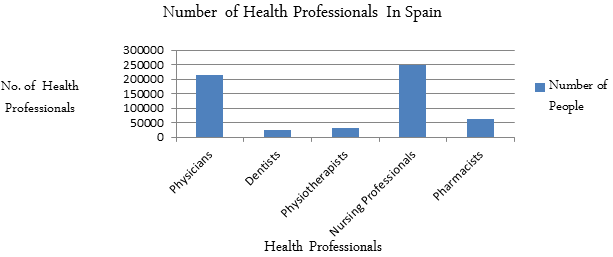
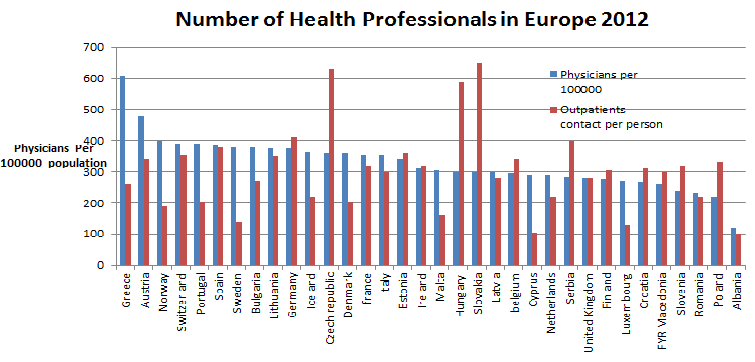
Hospitals associated with the Medical Case Reports Conference
- Surgical hospitals
- Medical-surgical hospitals
- Maternity hospitals
- Children's hospitals
- Maternity and Children's hospitals (materno-infantil)
- Psychiatric hospitals
- Hospitals for illnesses of the thorax
- Oncological hospitals
- Ophthalmic hospitals
- Traumatological and rehabilitation hospitals
- Psycho-physical rehabilitation hospitals
- Geriatric and long term care hospitals
- Leprological and dermatological hospitals
There are about 18 very well reputed hospitals in the city. There are about 150 reputed hospitals in the country. There are 49 countries in the Europe continent each is very well recognized for their medical research
Associations Associated With Health Care System of Europe:
There are 70 major associations that support for Europe Health Care, some of the following are:
Austrian Health Promotion Foundation (FGOE)
National Institute of Public Health (SZU)
Danish Health and Medicine Authority (SST)
North of England EU Health Partnership (NEEHP)
The Health and Europe Centre, NHS Kent & Medway
Clinical Research Organizations Associated With European Health Care:
There are approximately 60 major clinical research organisations in Europe, some of them are:
- ASCOpharm Paris, France
- Aster Cephac France
- Biodata Services ApS
- Bio-Kinetic Europe, Ltd. Belfast, North Ireland
- Biotrial Rennes and Paris
- C &T Paradigm Belgium
Main Funding Backgrounds of Spanish Healthcare R&D System
The Spanish Health Care System is divided into three groups and they are:
1) Public
- Central Government (CICYT)
- Local Governments
- Carlos III Health Institute
- Public Foundations
- Government Agencies
2) International Organizations
3) Private
- Non Profit – Research foundation, Research charities.
- For Profit – Pharmaceutical industry, Biotechnology industry.
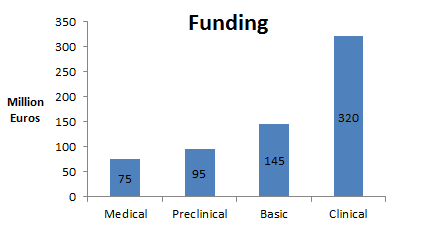
Financing and Sponsoring:
The main research fund recipients in Spain are:
- Spain National Research Council ( CSIC )
- Hospitals and Foundations
- Universities with Medical Schools
- Private Laboratories
- Medical Research Organizations
In Spain the main funding agency for biomedical research is Instituto de Salud Carlos III institute, they fund depending on the ministry of health, Spain. There are about 500 to 600 randomized clinical trials ( RCT ) are being performed in Spain. 80% of funding of these RCT is done by the pharmaceutical industries. The remaining percentage is covered by the individual investigators, scientific societies and co-operative groups. Madrid and Barcelona almost cover 50% of RCT participants.
CSIC is the largest public body research in Spain founded in 1939. In 2006, CSIC had a research budget of 675.8 million euros.
In 2006, the Pharmaceutical industries invested about 792 million euros in research and development. In this 323 million euros were spent on clinical research and clinical trials and 143million euros on basic research. An overall funding that Pharmaceutical industries fund to the clinical research is 300 million euros.
Canary Islands’ Foundation of Research and Health ( FUNICS ) is a public foundation at regional level established in 1990. FUNICS budget for the year 2007 amounted to 2.66 million.

Conference Highlights
- Psychology Case Reports
- Case Reports on Neurology
- Ophthalmology Case Reports
- Dentistry Case Reports
- Cardiology Case Reports
- Pulmonology Case Reports
- Gastroenterology Case Reports
- Diabetes Case Reports
- Obstetrics and Gynecology Case Reports
- Epidemolgy Case Reports
- Surgical Case Reports
- Case Reports on Pediatrics
- Case Reports on Public Health
- Dermatology Case Reports
- Case Reports in Cancer Science
- Case Reports in Clinical Pathology
To share your views and research, please click here to register for the Conference.
To Collaborate Scientific Professionals around the World
| Conference Date | June 30-July 02, 2016 | ||
| Sponsors & Exhibitors |
|
||
| Speaker Opportunity Closed | Day 1 | Day 2 | Day 3 |
| Poster Opportunity Closed | Click Here to View | ||
Useful Links
Special Issues
All accepted abstracts will be published in respective Our International Journals.
- Journal of Clinical Case Reports
- Journal of Clinical Research and Bioethics
- Journal of Clinical and Experimental Cardiology
Abstracts will be provided with Digital Object Identifier by




